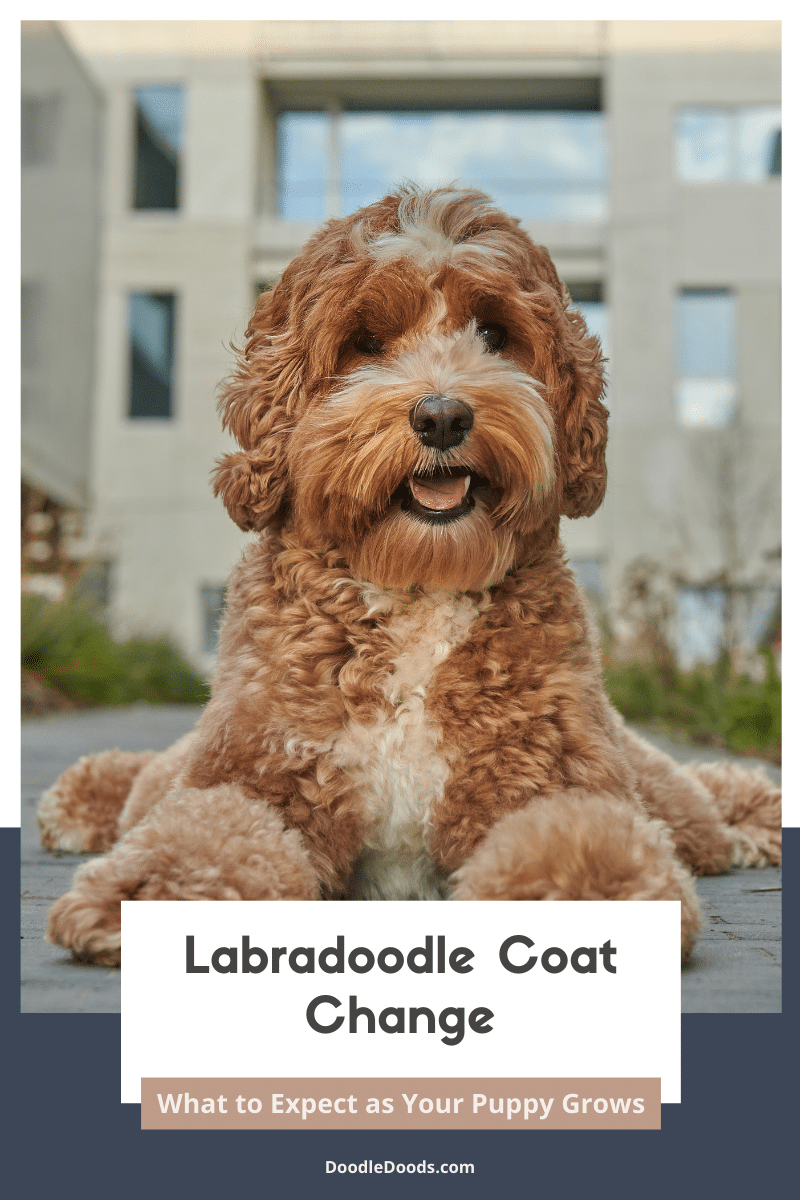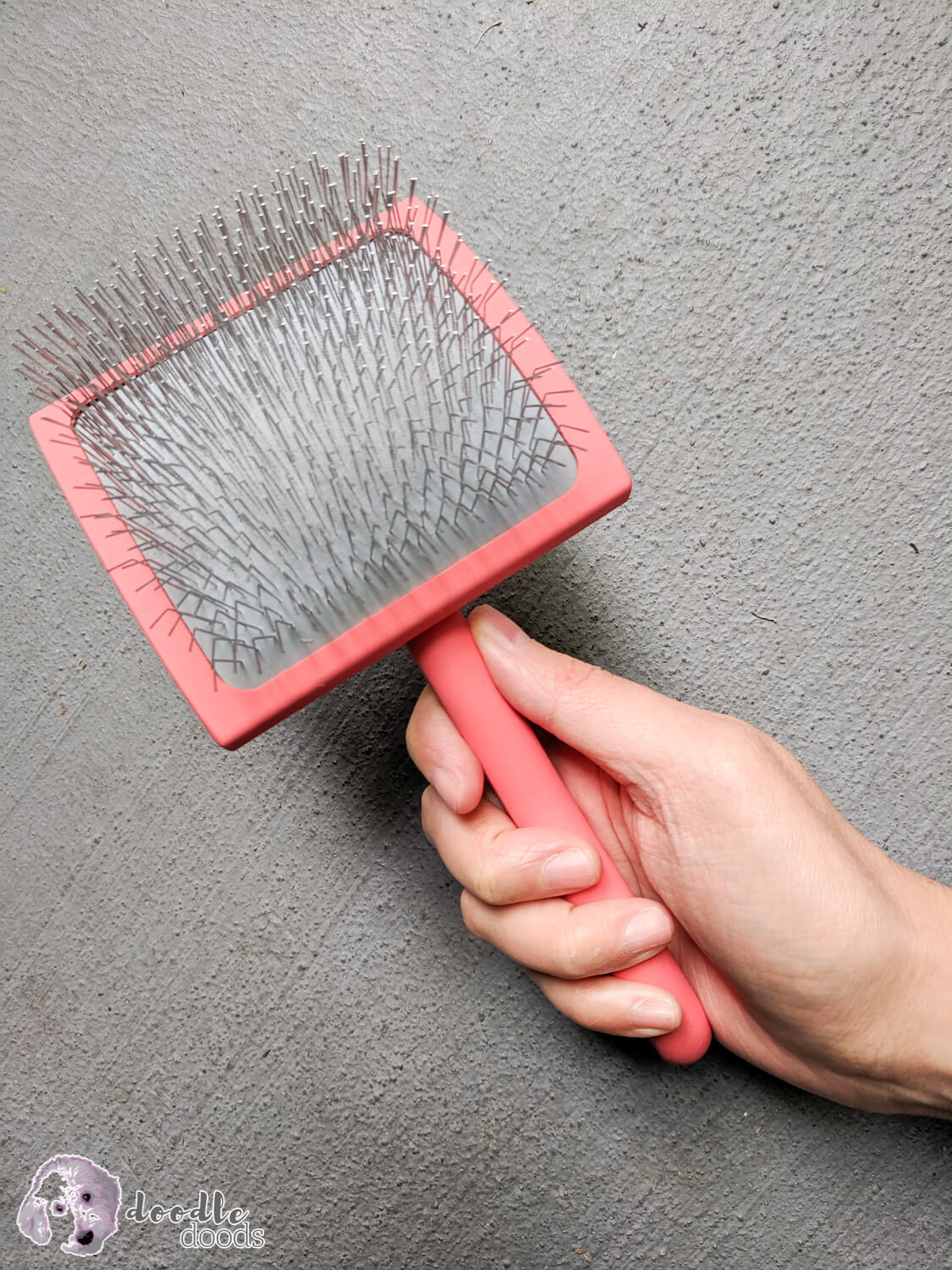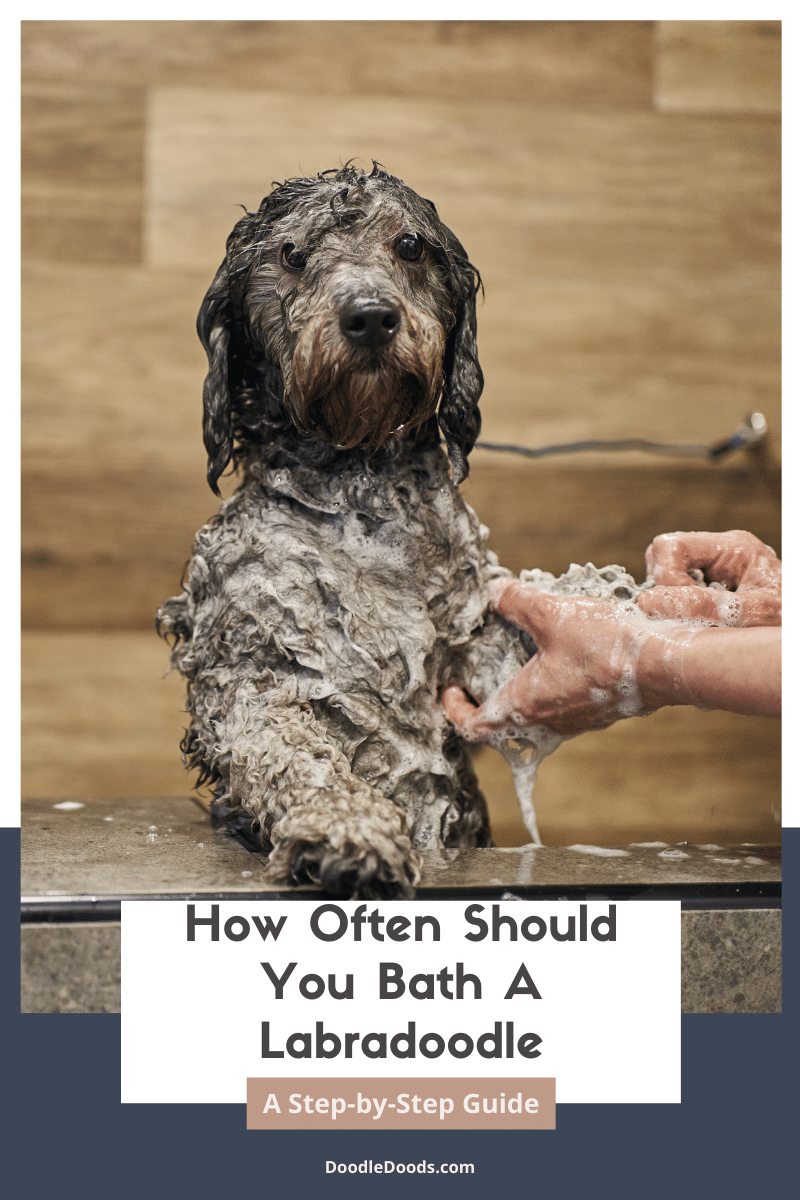Labradoodles, a family-friendly mix of the loving and loyal Labrador Retriever and the Athletic, low-shed Poodle, are up there with Goldendoodles and Cockapoos as the most popular of the Doodles. There are multiple reasons why people might choose to adopt one of these dogs over, say, their pedigree parents. Right at the top of that list is their much-hyped “hypoallergenic” status. However, you should be aware that the coat your newly adopted puppy has isn’t necessarily the one they’ll have as a mature dog. Labradoodle coat change is a thing, but what does it mean for your pup? Let’s take a look:
Table of Contents
- Labradoodles and The Great Hypoallergenic Debate
- The Three Types of Labradoodle Coats
- Labradoodle Coat Change: Puppy To Mature Dog
- Determining Which Coat Your Labradoodle Will Have
- Shedding: Normal or Issues With Coat Health?
- Grooming Mistakes With Labradoodle Coat Change
- Frequently Asked Questions About Labradoodle Coat Change
- Final Thoughts
Labradoodles and The Great Hypoallergenic Debate
Chances are you already know that Doodles, as a type of so-called designer dog, came about as a solution to the issue of pet allergies. Basically, many of the very best service animals are high shedders, which is a problem for those sensitive to the proteins found in dog saliva and carried by loose hair. So, with the idea to create low-shed service dogs, breeders added the “hypoallergenic” Poodle to the mix. While experts agree that no dog is ever completely hypoallergenic – all dogs shed to some extent, after all. The Poodle with its trademark curly hair coat is just about as close as you can come.
Breeders have been modifying dogs for certain purposes in this way for generations. So it really isn’t any wonder that this solution was hit upon. By finding just the right combination of working dog genes and low-shed ones, it was possible to develop the perfect service animals for those with allergies. That those who don’t relish cleaning hair up from all over their house could also enjoy these dogs was initially just a fringe benefit.
However, genes are tricky things, and expected outcomes aren’t always what they seem. So, with that in mind, to what extent can today’s Labradoodles be classified as hypoallergenic? Well, that all depends on the kind of coat they inherit…
The Three Types of Labradoodle Coats
The thing about Labradoodles is not only do they have two very distinct parent pups, but these parent pups also have widely varying coats. In fact, they are about as different as you can get. That’s why, depending on the generation of the Labradoodle in question and the resultant gene combo, your puppy could end up with one of the following three coat types:
Wool Coat
The most desirable of all the coats for those with allergies, the Poodle-inspired single-layered wool coat is both the curliest and the lowest shedding of the bunch. You should know, though, that just because you won’t be dealing with a coating of hair across your carpet and furniture doesn’t make this hair the easiest to deal with. The problem is that while the hair is actually still on your dog, you will be committed to near-daily brushing to ensure it doesn’t form knots, tangles, and eventually impossible-to-deal-with matting.

Hair Coat
Right at the other end of the canine spectrum, you have the Labrador Retriever straight-haired double coat. Naturally, this one is the highest shedding of the three (although it has to be said that it is nowhere near as bad as the regular old Labrador Retriever type). These dogs tend to resemble their non-Poodle parents the most, and while you’ll frequently be dragging out the vacuum in the wake of these pups, you can also content yourself to know that grooming time will be wayyyy down compared to the others.
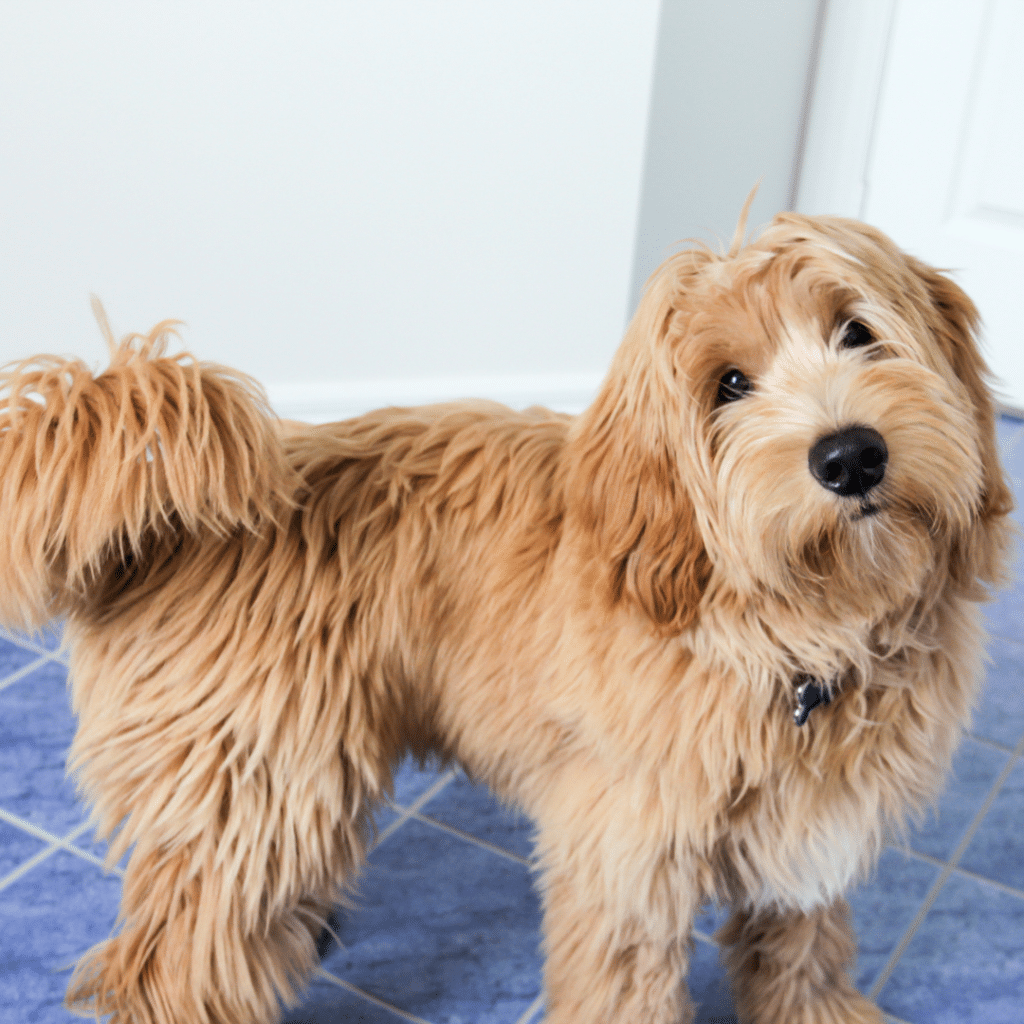
Fleece Coat
Finally, your pal could end up with a coat that sits somewhere in between the two extremes. Wavy and single-layered, the fleece coat is likely the one that most people think of if they picture the Doodle. Rather than resembling one parent over the other, the dogs are distinctively Doodle, looking like gorgeous little teddy bear dogs. The other good news about this coat type is that it’s also pretty low shedding, as compared with the hair one, and it also doesn’t take that much looking after, just regular trims, to keep it in hand.
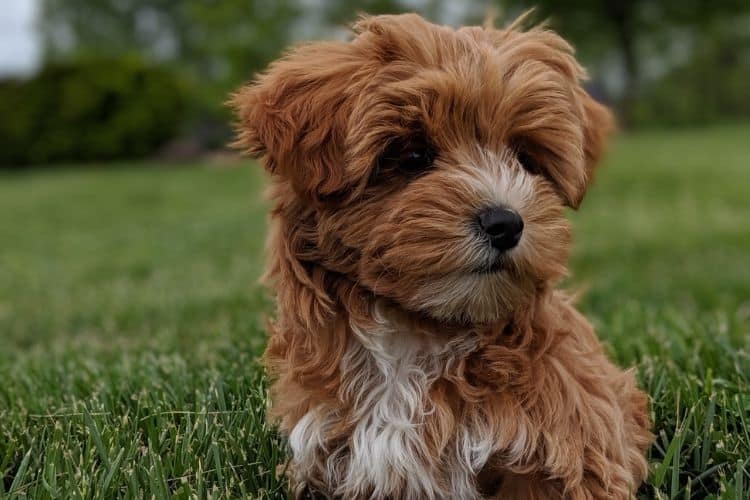
Labradoodle Coat Change: Puppy To Mature Dog
When looking to adopt a Labradoodle, if you’re already aware that they have different coat types, you may well have a strong opinion on which you would prefer – for whatever reason. However, it’s not quite as simple as picking out the puppy that matches your requirements. The reason? As per the title of this article… Labradoodle coat change. Basically, as touched on above, this means that your puppy’s current coat is typically quite different from the one they grow up into.
The shedding of the puppy coat is a natural process that occurs in all dogs somewhere between the ages of six months and one year. This might come as a shock to newbie pet owners that are expecting to have adopted a low-shedding dog. However, the shedding of the puppy coat is pretty standard and in no way indicates that you will be dealing with a high-shedding Labradoodle for the rest of their days.
The coat that grows in to replace this first one will likely differ in at least one of two ways: type and color, and we’ll outline that in a little more detail below. At the end of the day, though, you should be prepared for your wool, hair, or fleece-coated Doodle to look quite different at the end of this transition. That being said, there are a few signs to look for in your puppy that could tell you what you might expect from their adult coat.
Determining Which Coat Your Labradoodle Will Have
Some pet parents will be more than happy just to handle what they have; others may want to know a little more about what to expect in terms of their pup’s coat so they can be fully prepared. So, here are the big two switch-ups you might expect to see in a Labradoodle coat change and how to anticipate the outcome of them:
Labradoodle Coat Change: Type
One possible way you might know ahead of time what kind of coat a Labradoodle puppy might have is to pay close attention to their generation. Unlike pedigree dogs, Doodles can have varying amounts of Poodle/other dog genes based on how they have been bred. So, for instance, with Labradoodles, the breeder might combine a pedigree Labrador Retriever with a pedigree Poodle, and the resultant litter will be categorized as first-generation (F1) Labradoodles. They will have a 50/50 gene split. Determining the kind of coat each puppy in this litter might end with will be just about impossible.
However, the breeder may also choose to pair a first-generation Labradoodle with a pedigree Poodle in the hopes of introducing more Poodle genes and making it more likely that the offspring will have a low shed coat. This is referred to as backcrossing, and the puppies are labeled F1B. Backcrossing one of these dogs with another Poodle creates an F1BB litter, and so on. And it’s not just first-generation Doods that are backcrossed, but second and even third ones for F2B, F2BB, and Multigen dogs. So your first step in finding out about coat type is to chat to the breeder about the heritage of the puppies.
Once the puppies are born, you might also start to see some further clues in the ways their original coat starts to develop. Furnishings (the expert term for hair around the face, ears, tail, and legs) are great for this. Puppies with a neat and tidy muzzle with less hair in these other places will likely end up with a straighter, “flat” coat. However, dogs destined for a curly or even just wavy mane will usually have quite pronounced hair at these locations, especially around their beard area and around their eyes.
Labradoodle Coat Change: Color
Up until now, the focus of this article has been heavily on Labradoodle coat change as per type. This seems to be a key consideration for most looking to potentially pick up a Doodle pup. However, a further way Labradoodle coat change may be seen is with regards to color. Unlike with coat type, there isn’t one simple transition from puppy coat to adult coat. Oh no. In fact, a Labradoodle’s coat color could actually change throughout their lives. Yet, it is this first change that will likely have the most significant impact here too.
That being said, again much as is the case with coat type, the eventual color of your fur baby’s hair can also be predicted – you just need the right information. Obviously, genetics has the decisive role here – so looking to the parent pups and existing offspring is a safe bet on what to expect, but it’s also good to have an awareness of the Poodle Fading Gene too. It’s due to the presence of this that black dogs can fade down into grey or silver, brown ones can become cafe au last or cream, and red ones apricot or blonde.
Shedding: Normal or Issues With Coat Health?
Once you notice your poppet leaving a little more hair about the place than before, it’s a good idea to get into the habit of brushing them more regularly. In that way, you can be sure to collect up most of the loose coat before it drops or gets tangled around the rest of the curls left forming tight, tricky knots that you may well need to end up cutting out. A decent slicker brush, such as the Chris Christensen Brush, which is designed to penetrate the coat fully, lifting and trapping loose hairs as it goes, will make your life easier.
However, if your pooch’s new coat grows in and you’re still noticing a significant uptick in their shedding, there could be an issue beyond normal puppy coat shedding. Poor coat and skin health is a common problem in canines, and it can be brought on by food or environmental allergies, among other things. The first thing to be sure of is that your Labradoodle is getting all the proper nutrition by feeding them a top-quality, balanced kibble rich in hair-strengthening ingredients such as omega fatty acids.
Beyond that, you should also opt for a canine shampoo that deals with the particular challenges of a Labradoodle’s coat – and specifically your pup’s unique one. Some are better for cleaning and odorizing; others are excellent for preventing tangles, and the most hydrating ones are perfect for shed control. These are enriched with ingredients that nourish hair and skin and reduce itchiness too. Some even contain mind-soothing essential oils that can help with stress – another cause of excess shedding.
Grooming Mistakes With Labradoodle Coat Change
Probably the biggest cause of mass amounts of shedding in dogs that don’t otherwise drop coats is dry skin and damaged hair. What many owners don’t know is that this can be caused by problems with how they are grooming their pups. One of the biggest no-nos is washing their hair too frequently and/or using the wrong product to do so.
First of all, you should never EVER use a human shampoo on your dog. Even the mildest formulas can do severe damage simply because people and canine skin have a vastly different makeup. While we tend to be very slightly on the acidic side with a pH skin balance of around 5, dog skin is much more pH neutral at about 7. This means that any products designed for us are going to be especially harsh on our pup. The one possible exception to this is a baby shampoo which tends to be a little milder, but a shampoo specifically designed for dogs is still the best option every single time.
In terms of frequency, you really shouldn’t be washing your hound any more than once a month. The reason for this is that their skin naturally produces protective oils that keep their coat in good condition. Every time you wash your dog, you’re inadvertently stripping away these oils, leaving their skin and hair more vulnerable to the elements. However, we understand that keeping a smelly pup about the house can be difficult. That’s why we’re happy to report that dedicated cleaning wipes and waterless shampoos can be excellent for keeping your pooch clean and fresh between washes.
Frequently Asked Questions About Labradoodle Coat Change
At around the age of six months to one year, your Labradoodle puppy will start to shed their puppy coat so that the adult one can grow in. While their puppy coat is often quite fine and soft, their adult coat can be distinctly different. Beyond coat type, a Labradoodle’s hair can also change color based on the interplay of their genes.
Depending on your dog’s coat type, you will need to groom them either on a daily or weekly basis to keep their hair knot and tangle-free. Alongside this, you should aim to wash them around once a month, picking out a top-quality canine shampoo that cleans and hydrates. Regular trims are also vital for Labradoodles to maintain good coat health.
Doodles can inherit something known as the Poodle fading gene (although, in truth, this is no single gene) from their Poodle parents, grandparents, etc. What this means, especially for darker-coated pups, is that their hair color can change significantly from their birth color. This typically happens in the first two years, although other shifts can occur later.
All Labradoodles are great Labradoodles in their own right, so there is no ‘best coat’ for these dogs. However, it’s good to factor in the shedding vs. grooming balance into the mix when picking out the puppy for you. Low-shed dogs with curly coats need near-daily brushing, whereas those with straighter hair tend to shed a little more than others.
One of the biggest mistakes owners tend to make with Labradoodles, who can be a little on the, let’s call it, “adventurous” side, is overbathing. This can quickly dry your pup’s coat and skin, leading to itchiness and hair loss, too, so aim for no more than once a month using wipes and/or waterless shampoo to keep things fresh in between baths.
Final Thoughts
As dogs go, Doodles can be pretty complicated to understand in terms of their genetics and how this will influence their adult appearance, temperament, and especially coat type. This goes doubly so for Labradoodles with their parents sitting at either end of the dog-coat-type spectrum. However, if you’re looking for a low-shed pup because of allergies or whatever, there are a few ways to be more sure that’s what you will end up with.
One thing to know is that you can’t make any assumptions based on the coat your puppy already has, as this won’t be sticking around for too long. Instead, it’s good to question the breeder you purchase your puppy from on the generation of your dog and what that means in terms of what you might expect in terms of their Labradoodle coat change.
Learn How to Stop Shavedowns For Good & Keep Matting At Bay!
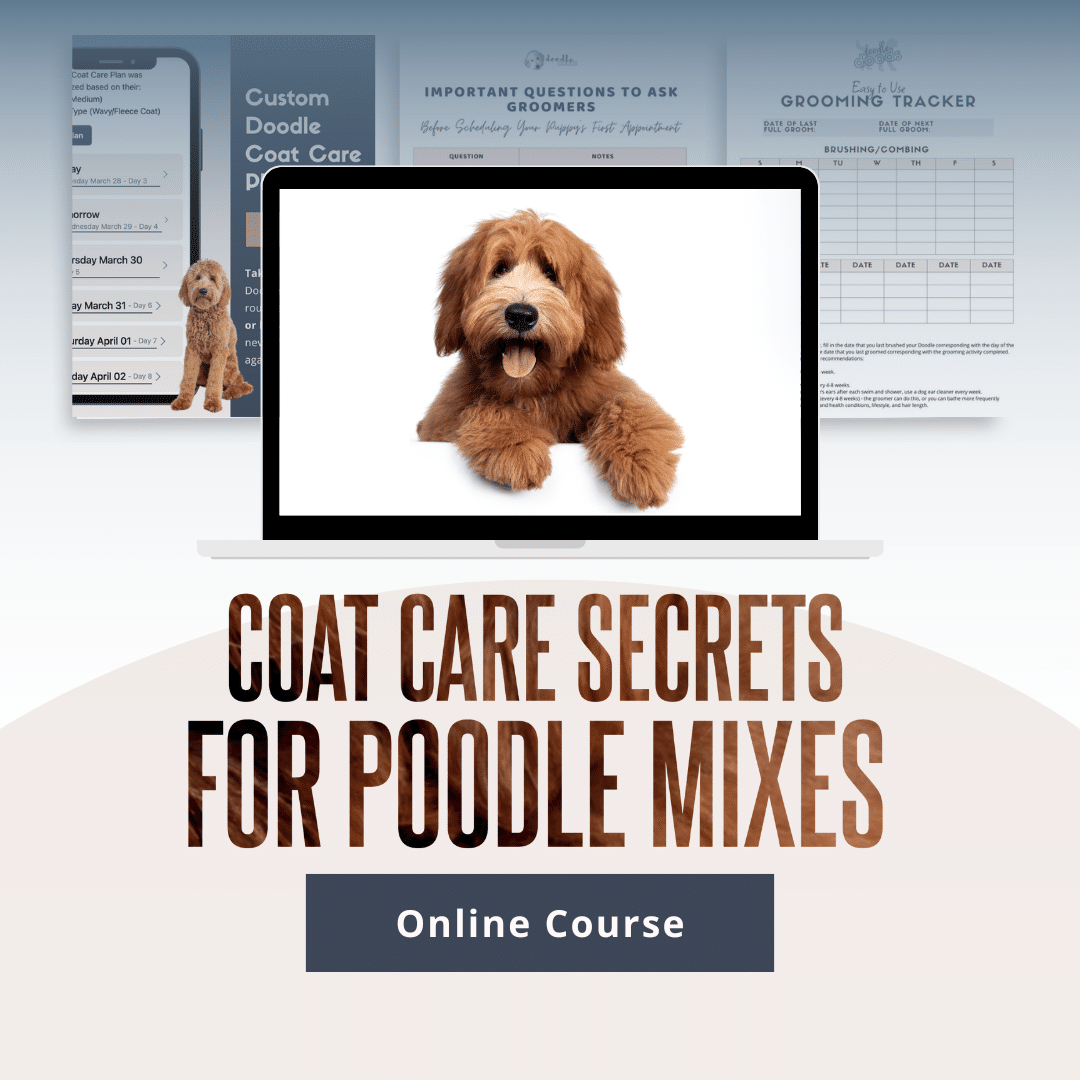
Discover the PROPER Doodle coat care routine that gets your pup to cooperate…helps you nip tangles in the bud…and gets groomers to do exactly what you want.
Plus, get $520 worth of Bonus Materials for FREE, including:- Doodle Parenthood Community and Support Group ($190 value)
- Custom Doodle Coat Care Plan Lifetime Access ($75 value)
- Easy to Use Doodle Grooming Tracker ($20 value)
- And MORE!

